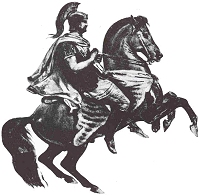
What Is Natural Horsemanship?

History

Natural horsemanship was developed in order to "gentle", or train horses without pain, fear, or punishment. Gentle training techniques can be documented back to 430-350 BC, in which Xenophon, an Athenian soldier and historian, wrote two treatises which regarded reassurance over punishment in horse training.
Back in the late 1800s,cowboys had to break large numbers of semi-feral horses in short periods of time. They used harsh methods that generated quick results, which the natural horsemship movement sought to replace. Modern Natural horsemanship was influenced developed in the Pacific Northwest and Rocky mountains of the United States, where the , "buckaroo", or Californian/vaquero-style cowboy traditions were the strongest. Some pracitioners found inspiration in concepts used by Native American horsemen.

The Basics
Natural horsemanship is simply a way to teach a horse in it's own language, such as body language and pressure/release, rather than using fear or pain, or "breaking" it's spirit. With natural horsemanship, a horse is still allowed to be a horse, instead of an animal that is forced to leave it's instincts behind and become something close to a robot. Horsemanship is about understanding, and respect for the horse.
The most popular term you will hear is pressure and release. Pressure is applying a "cue" for the horse to respond to, and release is rewarding the horse by stopping pressure, or your cues when they do what you're asking, or doing something that is a step towards what you're asking of them( called a "try").
What if you ask a horse to do something, and they don't do what is desired? Either check to verify if you are asking correctly, or hold on and correct them/keep asking until the behavior is achieved. You simply correct it until the desired behavior/action is performed.
Go to the Behavior page if you'd like to learn more about pressure and release!